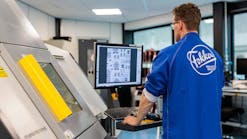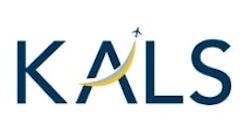Head of Aircraft Management and Sales of Jet Agent, Daniel Welinder shares his views on sustainability in the private aviation sector while showcasing how the industry is taking this matter seriously.
The aviation industry set a 2050 goal of net zero emissions in 2021. This goal would bring air transport in line with the Paris Agreement to limit global warming to well below two degrees. The aviation sector has 2.4% of global carbon emissions, less than many other industries. Of that, private aviation has just 0.04%, nonetheless, the business aviation community is really starting to take this matter seriously and is not shying away from its responsibilities.
The environmental impact of private jets has come under increasing public scrutiny, leading to concerns about sustainability. High-net-worth individuals and corporations are increasingly seeking ways to fly privately with a reduced environmental footprint, and some are even making sustainability a key factor in their decision-making.
While sustainable practices can enhance the brand image of private jet companies and operators, making them more appealing to environmentally conscious clients, the need to clearly discuss the feasibility of a wide array of options is paramount, and I believe alongside my colleagues at Jet Agent that technology will continue playing an instrumental role in the foreseeable future.
Technological advancements
Sustainable Aviation Fuels (SAFs) are bio-based or synthetic fuels with significantly lower carbon emissions compared to traditional jet fuel, with several sub-categories. One of them is Power-To-Liquid (PTL) solutions – by far the most sustainable solutions.
Overall, while not commonly used, SAF are starting to be introduced to commercial aviation, where available, but currently only blended with standard Jet A1. Alaska Airlines, American Airlines, and Cebu Pacific are just a few airlines leading the way.
In the private aviation realm, OEMs are all testing engines for use with 100% SAF. Gulfstream completed the world's first trans-Atlantic flight using 100% SAF last November. The flight was accomplished on a Gulfstream G600, which departed from the firm’s headquarters in Georgia, United States, and landed almost seven hours later at Farnborough Airport in England.
However, the challenge is generating the volumes needed at a commercially competitive price, therefore it's a long road ahead yet the best option available today and probably for the next decade.
Moreover, the fuel efficiency of aircraft has improved consistently since commercial airlines were introduced in the 1950s. Every new generation of aircraft has reduced emissions by between 15 and 20%. Overall, fuel efficiency is 80% better than in the 1950s.
Manufacturers are investing in research and development of fuel-efficient aircraft with improved aerodynamics, lighter materials, and more efficient engines, leading to reduced fuel consumption and emissions. The use of composites in manufacture instead of aluminium has brought aircraft weight down increasing engine efficiency. An announcement a few weeks ago in Sweden demonstrates clear actions in the environmental ecosystem and aviation is an essential engine for any economy in Europe. Along these lines, I believe that the sustainable solutions will come firstly on short-range regional flights and thereby also smaller business jets that fly around Europe, for instance. Business aviation can therefore become the industry leader in innovative sustainable solutions.
Furthermore, at a smaller scale, the transition from diesel to electric e-GPU, ground power units used to support the aircraft, is a complementary solution that is presently reducing the on-site emissions while improving the health of airside staff. Airports such as Amsterdam Schiphol have achieved a 90% reduction in emissions through the implementation of e-GPU technology, while Singapore Changi Airport has installed 26 common-use charging points to facilitate the adoption of electric baggage tractors.
Operational improvements
Utilizing advanced flight planning software and techniques can optimize flight routes and altitudes to minimize fuel consumption and emissions. Implementing efficient ground handling procedures and reducing taxi times at airports can further contribute to lower emissions.
At some popular private jet destinations, the airports have a lack of parking facilities for private jets. For example, in the Greek islands, French Riviera, and other private jet hotspots in the Mediterranean. This means that private jets must reposition to other airports further extending the carbon footprint. More parking would help considerably and reduce the impact on the climate.
While not a direct reduction in emissions, carbon offset programs allow individuals and companies to invest in projects that remove carbon dioxide from the atmosphere, potentially balancing out the emissions from their flights.
Cost still remains a challenge as SAFs and other sustainable technologies are often more expensive than traditional options, presenting a cost barrier for some operators and clients. Widespread adoption of SAFs requires significant investment in production and distribution infrastructure.
Overall, while sustainability is not the sole driver of the private aviation industry, it is undoubtedly becoming a significant factor. Growing demand for eco-friendly options, technological advancements, and operational improvements are all contributing to a more sustainable future for private aviation.
It's important to note that there are ongoing debates and concerns about the true effectiveness and social equity of some sustainability practices in the industry. As this area continues to evolve, it's crucial to consider the broader environmental and social impacts alongside technological advancements and market trends.
In order to succeed in 2050, it needs the coordinated efforts of the airline industry and the airlines, airports, manufacturers, and navigation services along with government support.
About Jet Agent
As your one-stop solution in the aviation field, Jet Agent serves as your trusted support and expert navigator, simplifying the complexities of the world of aviation. Whether you’re buying or selling aircraft, seeking luxurious charter experiences, or requiring comprehensive aircraft management, we ensure excellence and deliver more than expected.






